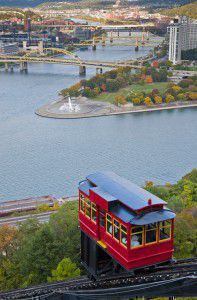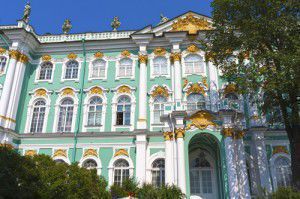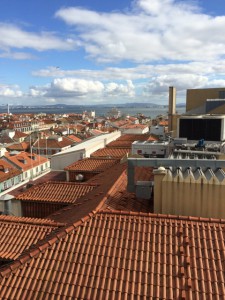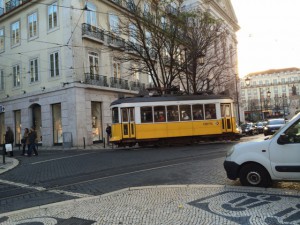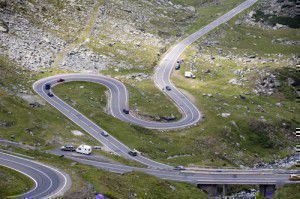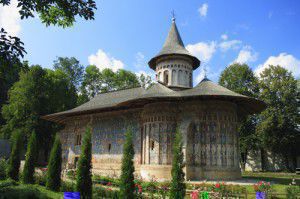10 Reasons to Visit… Pittsburgh
We love sharing our reasons to visit different places around the world, but we also enjoy hearing from you. Is there somewhere we’ve missed that you want everyone to know about?
Today we’re hearing from Emily Nemchick, who lives in Pittsburgh, Pennsylvania, with her top ten reasons to visit the city.
1. The Museums
Although many Londoners might baulk at having to pay to enter Pittsburgh’s museums, they are well worth a visit if you’re in town. Pittsburgh’s Carnegie museums offer a whole day’s worth of fun for art or history lovers. The Andy Warhol museum is also worth looking up for pop art fans, and the Mattress Factory is the perfect day trip for enthusiasts of quirky and imaginative art installations.
2. Mt. Washington
Mt. Washington offers some of the best views of Pittsburgh’s downtown, rivers and gorgeous skyline. Though it has a reputation as a rust-belt city, Pittsburgh’s setting at the confluence of the Ohio and Monongahela rivers makes for some extremely worthwhile vantage points from Mt. Washington’s overlook. Plus, if the season is right, Mt. Washington has some pretty darned good ice cream, too.
3. The Three Rivers Heritage Trail
Anyone who likes to bike or hike should definitely give Pittsburgh a go. Not only does it have trails aplenty, it boasts a biking trail that stretches from downtown Pittsburgh all the way to Washington D.C. For less adventurous bikers or those questing for a quiet stroll, there are also shorter riverside trails, which are a great way to see Pittsburgh whilst enjoying a bit of nature.
4. Local Cuisine (Pierogies!)
Pittsburgh has strong Polish heritage, and as such a local favourite is pierogies. If that isn’t your thing, there are still countless local restaurants offering a range of tasty cuisines. There are great places scattered all over town. Try Primanti Bros for a real taste of traditional Pittsburgh fare – their specialty is sandwiches with chips (French fries) and coleslaw inside the sandwich. It’s pretty decent, actually.
5. Pirates, Penguins and Steel
Not too many actual pirates or penguins unfortunately, but Pittsburgh’s sports teams might make up for the lack if you’re into American football, baseball or ice hockey at all. Pittsburgh’s PNC Park is a huge sports stadium which is a great place to catch a game if you’re in the Burgh during baseball season.
6. The Strip District
This is my absolute favourite place to be in Pittsburgh. The Strip District isn’t as naughty as it sounds, but it’s a great place to spend the afternoon nonetheless. The Strip is a long street boasting specialty cheese stores, coffee shops, fishmongers, butchers, baked goods, spices, open fruit and veg markets and a ton of great bars and restaurants. Anything you want to buy, you can buy in the Strip. It’s also a great place just to window shop and hang out.

7. Phipps Conservatory
Pittsburgh not only has awesome museums but a pretty nifty conservatory chock full of gorgeous flowers and plants. The exhibits change with the seasons, but they are always worth a visit.
8. The South Side
Anyone in search of some nightlife should check out the South Side, home to the happiest happy hours, the hippest clubs (I would assume from their long lines on Saturday nights) and the hoppiest bar hops (I wanted to keep that going there, but seriously, good bars). The South Side is a great place to go out to dinner, grab a few drinks or have a night out on the town affordably.
9. Station Square
Station Square is a fun place to check out some nice boutiques or head to a fancy restaurant. In the summer, it’s also the ideal place to break up a bike ride with a rest and a drink, because it’s right on the South Side bike trail. You can even roll your sightseeing into one and hop on the Incline (cable car) down from Mt. Washington. Pittsburgh is pretty pocket-sized, so it’s a great place to explore on foot, and Station Square is a fun and convenient addition to any itinerary.
10. Breweries
I confess, I saved the best until last. Pittsburgh is the home of many fantastic breweries, and locally brewed beer is pretty epic. Church Brew Works is a must-see as a brewery built inside a converted church, East End Brewing Co. has some tasty seasonal brews, and even whiskey fans can enjoy Pittsburgh’s locally distilled whiskey at Wigle.
It may not be the most glamorous city, but Pittsburgh has tried hard to change its traditional image as a rust-belt city and is regarded as one of America’s most livable cities. It’s guaranteed to keep tourists happy for days too. Stop by if you get a chance!
By Emily Nemchick, English expat and happy Pittsburgh resident.
Website: http://emilynemchick.weebly.com/
Blog: http://londontopittsburgh.wordpress.com/
Do get in touch with us if you’d like to share a ’10 reasons’ post of your own, or you have a suggestion for where we should cover next.
10 reasons to visit… Russia
Today, we’re going to Russia. At least in spirit. Here are my top ten reasons for visiting Russia – and, trust me, it’s been hard narrowing it down to ten!
1. Train Travel
Travelling by train is arguably the best thing you can do in Russia, so try to leap on one as soon as you arrive. Everything about it is an experience, especially if you’re used to the slender commuter trains of the UK. In Russia, trains are absolutely vast, and appear even more so since you have to climb up into them from ground level. They are slow and ponderous, stopping for twenty minutes or so at each station (enough time for you to get out, stretch your legs and if you’re lucky buy a smoked fish from a vendor on the street) and crawling in between.
Inside, a strange etiquette reigns, so that on the plus side you might be invited to share food and drink with your neighbour, and on the minus side you will be obliged to give up your ground level bunk to anyone older than you who only managed to secure a second tier berth. Presiding over the whole show is the train assistant, who will sell you bed linen and glasses to make tea from the great water boiler at the end of the carriage, and as a special bonus will shake you vigorously by the foot to wake you before your stop.
2. Petersburg
The Hermitage, obviously. You could easily spend a day wandering around it, drinking in all the extravagant beauty. In fact all of Petersburg is nice for walking around dreamily, looking into little museums and palaces and drinking coffee on Nevsky Prospekt.
3. Moscow
Tricky condensing this into one paragraph, but I think the best things to do in Moscow are to get the metro (looking at the sumptuously decorated stations along the way) to Sparrow Hills and there look at the view, then go out to the Novodevichy Cemetery where you’ll find various big names, including Shostakovich, Bulgakov and Mayakovsky. This cemetery shows enormous wealth and the desire to show it off after death, so look out for any especially showy tombstones. Then, of course, Red Square and the Kremlin are worth a good long visit, as well as Lenin’s Mausoleum, if you don’t mind being marched past the body at a fair lick and glowered at by armed guards from every corner within.
4. Hospitality
Although Russians often seem to have a reputation for being a bit moody when you first meet them (especially if you meet them on the street or in a public place, where it is a little frowned upon to show excessive emotion), you can very quickly make solid friends for life in Russia. Advice (on clothing, appearance, relationships, career choices) can be offered pretty freely in a way that can be startling, but is generally very well-intentioned. If you’re invited round for dinner, take a bottle or some chocolates, as there will probably be a very generous spread laid on for you.
5. Dachas
If you’re looking for a little bit of peace and quiet, try to get someone to invite you to their Dachas, as this is where Russians traditionally kick back and relax. Out in the country with big allotment-style gardens around them, dachas often are simple buildings with outside toilets and local wells supplying water. People grow vegetables (lots of them), pickle vegetables (often enough to last them through the winter months), make wine and home-brew alcohol, go fishing, hunt for mushrooms, and generally have a great time.
6. All night life
Go out in most cities in Russia and you can stay out all night. All night! And it’s not just clubs that stay open all hours, but cafes and restaurants too, so that you can actually stay in the same building and have an evening meal, go dancing, get breakfast, sit with a paper and carry on right into lunch, if you want to. A lot of places which look like inoffensive coffee houses and restaurants will acquire some dance-floors and professional dancers come evening, meaning you don’t have to venture out into the cold at all if you don’t want to.
7. The banya
Like with the dacha, if you’re after traditional Russian relaxation then go to a banya. A lot of towns will have public ones (often separate bathing days for men and women) but lots of dachas will have their own private ones. Russians like it pretty hot so if you’re not used to it then it might be a bit of a shock to the system. Extreme, humid heat is followed by being doused with bowls of cold water – relief for a few seconds, at least. Beating each other with birch twigs is also standard practice, but can seem like you’re crossing a barrier if you end up engaging in it with your host.
8. Food
Russian food is all interesting and delicious, but what is particularly excellent is snack food, widely available on kiosks on any street corner. Ever had crisps flavoured with caviar or sour cream and dill? Or dried bread croutons, watermelon-flavoured chewing gum and dried salt fish (a traditional beer snack)? In bars and cafes, beer can be accompanied by fried cheese and deep-fried sticks of bread, or long laces of deeply salted, chewy cheese.
Not that all Russian food is snack food – far from it. Porridge in Russia is so varied that you can have porridge made from a different grain every day of the week, and people take pride in making the traditional soups (you’ll probably come across borshch, the beetroot soup shchi, the cabbage soup, and solyanka, the delicious soup with olives) and salads (of which arguably the best are selyodka pod shuboy – herring under potatoes, mayonnaise and grated beetroot – and salat Olivier, know worldwide as Russian Salad).
9. Weather
Being vast, there is a vast range of weather, but the cold winter is something Russia specialises in and there are lots of excitements around it. Fur markets (selling hats and coats in everything from rabbit to mink) spring up and it becomes a squeeze fitting everyone into the trolleybuses with their extra padding of coats, jumpers, thermals. On the lakes, people will bore holes in the ice and go ice fishing, traditionally accompanied by another, fishy soup, uha, into which you pour a shot of vodka just before eating.
10. Queues
Bit of an odd plus to end on, but queuing is a real art in Russia and it’s such an everyday thing that I quite miss it. The best sort of queue is at a train station, where your first big decision is which queue to join. Don’t be fooled into joining the shortest one, as it might be short because the cashier is about to take her hour-long break. A very small understated sign in the window will give the break times so you can estimate how long it will take the queue to move and choose a line based on that. It’s often best to be armed to the teeth with all the information you might possibly need to book a ticket (train number, date, type of carriage, whether or not you want linen) before getting to the front of the queue, as often the attendants don’t have time for dalliers and won’t hesitate to send you to the back of the queue if they see you floundering.
The other thing to remember about a Russian queue is that when you join it it might be quite a bit longer than it looks. This is because Russians will stand in several queues at once, physically in one and then virtually in another by simply telling the last person in it that they are standing behind them. It’s then the responsibility of that person to advertise the virtual person to anyone who comes along afterwards and of the newcomer to ask who is last (can be a bit confusing when the response to this is to point to someone the far side of the room). Depending on which queue reaches the window first, the queuer will either renounce their place in other queues or niftily dash across to reclaim one of their virtual places.
Got any favourite things about the country you’d like to add? We’d love to hear them! And don’t forget to learn a little of the language before you go.
Nat
Easter celebrations around the world
Here in the UK, this weekend is Easter weekend. Many people will be marking the occasion by attending church services on Good Friday and Easter Sunday, while a more commercial tradition is to exchange chocolate eggs as gifts. Easter is a religious holiday, marking for many people around the world the death and resurrection of Jesus, but it also represents new life, falling as it does in spring time, and is often symbolised by young animals, like lambs and chicks.
We decided to have a look at some Easter traditions around the world, to see how other countries mark this holiday. Here are just a few:
Brazil
Mardi Gras (which means ‘Fat Tuesday’) takes place in Rio de Janeiro on Shrove Tuesday and marks the start of Lent. The streets are filled with large processions of people in brightly coloured, exotic costumes, marching, singing and dancing.
Another Brazilian tradition is to create straw dolls to represent Judas Iscariot, then destroy them in the street.
France
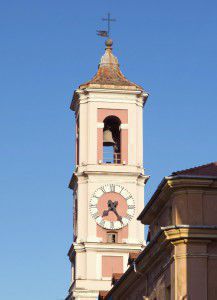 Church bells are silent as a sign of mourning from Maundy Thursday until Easter Sunday. Sometimes children are told the bells (known as ‘cloches volants’ or ‘flying bells’) have gone to see the Pope and will return with Easter eggs.
Church bells are silent as a sign of mourning from Maundy Thursday until Easter Sunday. Sometimes children are told the bells (known as ‘cloches volants’ or ‘flying bells’) have gone to see the Pope and will return with Easter eggs.
In parts of southwest France, a giant omelette is made on Easter Monday. The dish can feed 1,000 people.
Ethiopia
During Lent in Ethiopia, Christians don’t eat or buy any animal products like meat, eggs, butter, milk, yogurt, cream and cheese.
The first Easter day service starts at 8 p.m. on Easter Saturday and lasts until 3 a.m. on Easter Sunday.
After the service, people will return to their homes and have a breakfast of ‘dabo’ sourdough bread to celebrate the end of Lent. Traditionally, the bread is cut by a priest or the head man in the family.
Czech Republic and Slovakia
As part of an Easter tradition, women and girls are beaten with decorated hand made whips on Easter Sunday. But despite what you might think, this is actually a good thing; the whipping is thought to make women more healthy and beautiful, and girls who don’t get whipped are often quite offended!
Chios (Greek Island)
In the village of Vrondados, the annual ‘war of rockets’ is staged between two churches, Agios Marcos and Erithiani. Residents spend all year preparing thousands of firework rockets and on the evening of Easter Saturday, the rockets are fired between the two churches for hours.
The custom goes back many years, and although there are plenty of stories, no one is quite sure how the tradition began.
Spain
Many towns and cities in Spain celebrate Semana Santa (Holy Week) with processions through the streets at night. Floats called ‘tronos’ are carried through the streets. Each float bears huge decorated figures representing part of the Easter story. It takes 40-50 people to carry each trono on their shoulders and processions can last between 4-5 hours.
In Murcia, a trono telling the story of the Last Supper has real food on the table. On Easter Sunday, the 26 men who have carried the table in the procession sit down and eat the food.
Please share your own Easter traditions in the comments. And whether you celebrate Easter or not, we hope you have a great weekend.
Seb
10 reasons to visit… Lisbon
Having just come back from Lisbon and having loved every minute of it, I had to continue the ‘10 reasons to visit‘ series with this fantastic city! Here are my thoughts on why you should visit…
1. Cork
I had no idea this was a big Portuguese commodity but apparently Portugal produces well over half the worldwide supply of cork. Presumably because we use less and less cork in bottle stopper production, the Portuguese have become extremely inventive in finding other products to make from the strange bark, and shops in the centre of Lisbon are stuffed full of cork purses, hats, sandals, bags and jewellery – even the odd umbrella!
2. Hills
Some people might disagree with me on this one, but I like a city with hills, and Lisbon is mostly hills. Pretty steep hills. The reason this is good is that it provides lots of great viewpoints, and the view is worth puffing up a hill for. From the top of the Parque Eduardo VII or the Aguas Livres Aqueduct, the view is particularly good, showing a great sweep of pale red rooftops descending into the river estuary. I was staying right at the top of perhaps the steepest hill in town, and climbing up it several times a day made me feel less guilty about having the extra odd pastéis, but if you get fed up with them there’s always the funicular railway to drag you up or down the hill.
3. Pastéis de nata
I really regret not buying a crate of these to bring back. This is definitely the best pastry I’ve ever tasted, and you can get it in every other shop. Gooey, custardy filling inside flaky pastry, slightly burnt like a creme caramel on top. Yum yum yum.
4. Friendly people
I’ve rarely been anywhere where I was made to feel so welcome. Everyone we chatted to had time to talk to us, and everyone was smiley and helpful (a far-cry from London!) Since I work in languages, I always feel guilty not trying to speak the local language a bit so I took uTalk Portuguese with me and managed to get by fairly successfully – but not having practised at all my pronunciation was somewhat questionable. And yet, instead of the scornful expressions you encounter in some places, in Lisbon everyone was patient and happy to listen to me mangling their language. Also, a lot of people addressed me in English before I could even try out my Portuguese – something which impressed me and put me to shame at the same time.
5. Belém
At the far side of the city, the little district of Belem is definitely worth seeing. Its main street is crammed full of bakeries (more pastéis) and small, good-value restaurants selling great seafood dishes. There’s a great big expanse of green park and a long promenade along the seafront, past the impressive statue to Portuguese exploration and the famous Belém Tower. If you’re looking for somewhere to take a book and chill out for an afternoon I recommend Belém!
6. The tram
Lisbon has a set of extremely iconic yellow trams, crammed full of people as they make their rickety way along the streets. Rising very tall off the ground but being very short, they look like little shuffling animals sneaking through the streets. If you’re more of an underground person, the metro has some beautifully decorated stops too – I particularly enjoyed the caricatures at the entrance to the Aeroporto stop.
7. Bacalhau
Aka salted cod. This traditional dish is served for Christmas dinner in some households, and is definitely worth ordering if you get the chance. Historically a fishing nation, the fish and seafood dishes are diverse, imaginative and delicious. I recommend Bacalhau à Gomes de Sá, a mixture of bacalhau, eggs and olives.
8. Cobbled streets
Again, maybe not an actual reason to go to Lisbon, but it’s something really nice when you get there – the streets are all paved with small cubes of white flint which reflect the light so much that it makes you squint. So smooth in places that you slide along them, these cobbles give the roads a charming, uneven surface and make you wonder how long it took to lay all these stones down in the first place.
9. The Elevator of Carmo
I didn’t actually go on this elevator as it seemed a bit of a waste of money, but you can walk along the platform for free and you get another great view over the bustling main street below. The elevator accommodates for the split-level in the street (another consequence of the hilliness) and is built in a fantastic, dark, neo-Gothic style- really imposing.
10. Bairro Alto
The trendy district of Lisbon: we found that it was quite sleepy in the morning and afternoon, but from about 9 at night all the doors open up to reveal tiny, one-room bars selling cheap beer in plastic cups. Everyone meshes together on the streets drinking and chatting, moving from one bar to the next until the dawn creeps in. The whole atmosphere was really friendly and I can’t wait to go back!
Are there any other fans or residents of Lisbon who’d like to share their own reasons to visit? And remember you can send us your own contributions for places to feature in our ’10 reasons to visit’ series 🙂
Nat
10 reasons to visit… Romania
As you know, we love travelling and learning about all kinds of cultures around the world, so we decided to start the ’10 reasons’ series – every now and then we’re going to give you 10 reasons for which you should consider visiting a new country.
This month I chose Romania because it is my home country and because I can think of a lot more than ten reasons to visit this beautiful country. So, enjoy your read and please note that the reasons are not stated in any particular order – all are equally important.
1. Breathtaking mountain landscapes
Romania is one of the ‘lucky’ countries which gets to enjoy both mountains and sea, but the truly amazing landscapes are definitely to be seen in the Carpathian mountains. There are two main roads that traverse the mountain chain and they are Transalpina and Transfagarasan. These roads reach the altitude of 2042 metres (6700 ft) and take you through endless curves and sheer drops – make sure you pull over to take photos.
2. Transylvania
This might be the best known area in Romania, mainly because of the Dracula myth that is supposed to have taken place here. I’m not going to tell you about how you can have vampire encounters (Dracula is as real as Edward Cullen so don’t get your hopes up), instead I’m going to tell you that this is a very special part of Romania, having many colourful medieval cities with beautiful architecture as well as friendly people and delicious food – but more about this in the following points.
3. Black Sea resorts and summer fun
My hometown is on the Black Sea shore and I can promise you, it is like Ibiza down there. There are parties almost every day of the week during the summer but the weekend is when it gets really loud and fun. Most Romanians go there for a couple of weekends during the summer for festivals and other party-related events. You can even go on your own, you will make a lot of friends. During the day, you can lay on the beach and get a nice tan to show off when you go back.
4. Finger-licking food
If you decide to take a trip to Romania, make sure you are ready to come back home with 5-10 pounds extra, as the food over there is delicious – from the national food cabbage rolls (or stuffed cabbage) with porridge made out of yellow maize flour, to any kind of pies and cocoa sponge cake to Turkish influenced cuisine, everything you will eat there will taste amazing! On top of that, most Romanian women are really good cooks.
5. Ski- and winter-resorts
Now, I’m not much of a skier but I can tell you that you can have a great time skiing or snowboarding in the winter in the Romanian mountain resorts. The best known area for this is Prahova Valley, which is basically a river making its way thorough the chain of mountains and there are about 7-8 small resorts where you can get your share of winter fun, winter landscapes and mulled wine (what, did you think there’s no alcohol involved?).
6. The Danube Delta
If you’re more the nature-loving/sleeping-in-a-tent-is-fun kind of person you might want to take a trip here. This place is a naturally formed delta, where the Danube flows into the Black Sea. It is known for its wild places because it is pretty difficult to live there all year round given all the water and muddy islands. There are some men-built resorts where you can stay if you don’t enjoy the wilderness that much but the true sense of this place is that you can have that bonding-with-nature kind of experience.
7. The beautiful girls
Don’t get me wrong, this is not a ‘place’ you can visit, they don’t have them all lined up behind a window (although, you can find that in Amsterdam – so I’ve heard). It’s just that Romanian women are known to be beautiful and that is mostly because they take much interest in their appearance and they enjoy going out in cafés, pubs or clubs – so that makes them something you might want to experience seeing in Romania.
8. Bucharest nightlife
Speaking of clubs, this brings me to the capital of Romania – Bucharest. This big city has a vivid nightlife and fancy, luxurious clubs with music that plays till the sunrise. The custom is that you go to a club where you party & drink til 5-6 a.m. and then you go and have some Turkish kebab or shaworma (a kind of wrap) as a hangover cure. The place where you can find most of the clubs is the Old City Centre, which is very beautiful to visit during the day as well.
9. Northern Moldavia
If you are more the museum-visiting type, this area is one that you would enjoy. There are a lot of old monasteries (some date from the 14th-16th century) where nuns and monks still live nowadays and that are part of the UNESCO world heritage because they are represent the Romanian tradition. They are usually surrounded with vegetation so that can be a place to find peace and serenity even if you are not religious. Be careful of the dress code – you have to wear trousers (or a long skirt) and something rather decent for the top part.
10. The people
I’ve saved the best for last. One important reason you should visit Romania is to find that the people there are welcoming and warm, that you can make long lasting friendships very quickly and that even though Romania is a country that has had many struggles in the past, people are still good at heart and they will welcome you in their house as a friend, not a tourist.
And of course before you go, don’t forget to learn some Romanian, and take uTalk with you in case you get stuck while you’re there…
If you have any suggestions for our next ’10 reasons to visit…’ post, please let us know!
Ioana
